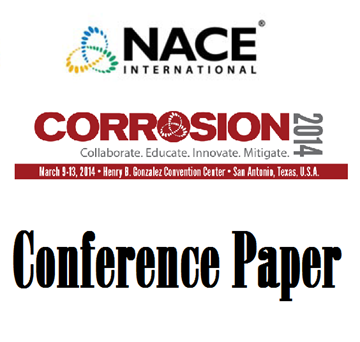Search
Products tagged with 'corrosion'
View as
Sort by
Display
per page
51314-3723-Pipeline Corrosion Management; a Compendium
Product Number:
51314-3723-SG
ISBN:
3723 2014 CP
Publication Date:
2014
$0.00
51315-6035-Validation of New Test Facility for Erosion-Corrosion Inhibition Prediction
Product Number:
51315-6035-SG
ISBN:
6035 2015 CP
Publication Date:
2015
$20.00
51316-7036-Abrasion-Corrosion Resistance of Stainless and Wear Resistant Steels for Oil Sands Applications
Product Number:
51316-7036-SG
ISBN:
7036 2016 CP
Publication Date:
2016
$20.00
51316-7115-Risk Assessment And Downhole Chemical Treatment Program For Production Wells Within The Wafra Field
Product Number:
51316-7115-SG
ISBN:
7115 2016 CP
Publication Date:
2016
$20.00
51316-7121-Corrosion Induced Bridge Tendon Failures Resulting from Deficient Grout: Part I – Model Development
Product Number:
51316-7121-SG
ISBN:
7121 2016 CP
Publication Date:
2016
$20.00
51316-7149-Corrosion Mechanism of API X80 Steel Material in Sour Environment at Different Temperatures
Product Number:
51316-7149-SG
ISBN:
7149 2016 CP
Publication Date:
2016
$20.00
51316-7187-Amine Corrosion in Gas Sweetening Plant: Causes and Minimization on Real Case Study
Product Number:
51316-7187-SG
ISBN:
7187 2016 CP
Publication Date:
2016
$20.00
51316-7188-Failure Analysis and Investigation Methods of Boiler Tubes Corrosion/Case Study
Product Number:
51316-7188-SG
ISBN:
7188 2016 CP
Publication Date:
2016
$20.00
51316-7237-Corrosion Assessment of Nickel-based Alloy Candidates for SCWR Fuel Cladding
Product Number:
51316-7237-SG
ISBN:
7237 2016 CP
Publication Date:
2016
$20.00
51316-7270-Electrochemical Corrosion Behavior of Niobium Alloys as Metallic Bio-Implants
Product Number:
51316-7270-SG
ISBN:
7270 2016 CP
Publication Date:
2016
$20.00
51316-7272-Electrochemical Study of Nb-10Ta-1Re and Ti-6Al-4V Alloys for Dental Implant Applications
Product Number:
51316-7272-SG
ISBN:
7272 2016 CP
Publication Date:
2016
$20.00
51316-7285-Surface behaviour of carbon steel in presence of sulphate-reducing bacteria
Product Number:
51316-7285-SG
ISBN:
7285 2016 CP
Publication Date:
2016
$20.00












